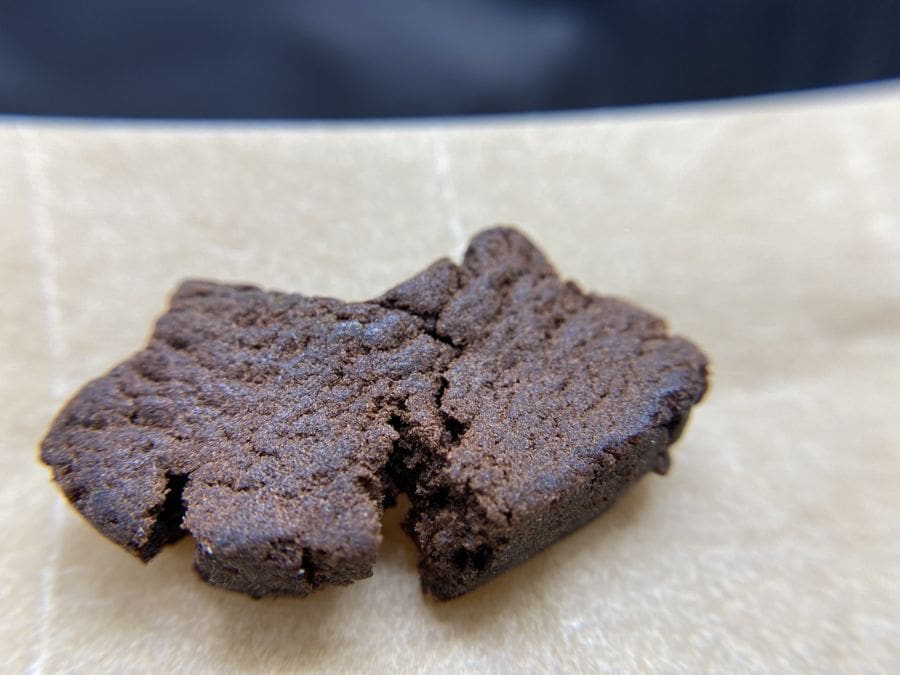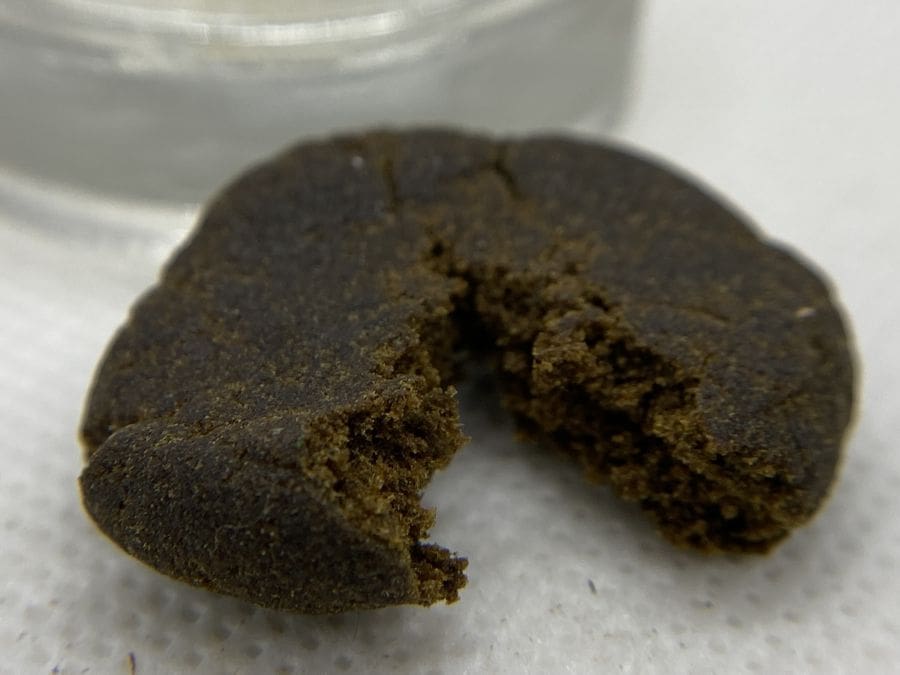Are you a hash enthusiast or simply looking to expand your knowledge on unique varieties of hash? Look no further! This article provides an exciting glimpse into the world of rare hash varieties found across the globe.
From the mountainous landscapes of Nepal to the vibrant markets of Morocco, you’ll discover the fascinating origins, flavors, and effects of these exceptional hash types. Whether you’re a seasoned connoisseur or a curious beginner, prepare to embark on a captivating journey through the world of rare hashish varieties.
Understanding Hash
Definition of Hash
Hash, also known as hashish, is a concentrated form of cannabis that has been used for centuries for its potent effects. It is made by extracting the resin from the cannabis plant, resulting in a concentrated product that is usually consumed by smoking or vaporizing. Hash is known for its high THC (tetrahydrocannabinol) content, making it a popular choice among cannabis enthusiasts who are seeking a more intense experience.
Historical Context of Hash
The use of hash can be traced back to ancient civilizations, with its origins believed to date back thousands of years. Historical accounts suggest that hash was first discovered and used in regions such as the Middle East, North Africa, and South Asia. The exact timeline of its introduction to these regions is unclear, but it is believed to have been used for both recreational and medicinal purposes.
Methods of Hash Production
Hash production involves removing the resin glands, also known as trichomes, from the cannabis plant. There are several methods used to produce hash, each with its own unique characteristics. Some common methods include hand-rubbing, dry sifting, water extraction, and mechanical separation. The chosen method can significantly impact the final product’s texture, potency, and overall quality.
Importance of Quality in Hash Production
When it comes to hash production, the quality of the final product is of utmost importance. The potency, flavor, and overall experience of consuming hash can vary greatly depending on the extraction method, the source material, and the skill of the hash maker. High-quality hash is typically made from premium cannabis strains and is carefully crafted to preserve the plant’s natural properties. It is essential for hash enthusiasts to seek out reputable producers who prioritize quality in their production process.
Middle Eastern Hash Varieties
Lebanese Hash: Overview and Unique Characteristics
Lebanese hash is renowned for its unique qualities and has been a staple in the Middle Eastern cannabis culture for centuries. It is commonly hand-rubbed, a traditional method of hash production where the resin is collected by rubbing the cannabis plants with the hands or gloves. This technique results in a soft, malleable texture and a distinct aroma. Lebanese hash is known for its rich flavor profile, often described as spicy and earthy, with hints of pine and citrus.
Afghani Hash: History and Production Techniques
Afghani hash is highly regarded worldwide for its exceptional quality and potency. Afghanistan has a long history of hash production, and the country is known for its dedication to preserving traditional hash-making techniques. Afghani hash is typically made using traditional hand-rubbing methods in which skilled hash makers meticulously harvest the resin by rubbing the plants. The result is a dark, sticky hash with a robust and intense flavor profile, often described as earthy and hashy.
Moroccan Hash: Distinguishing Features
Moroccan hash holds a special place in the world of hashish and has gained recognition for its unique characteristics. It is primarily produced using the dry-sifting method, where cannabis plants are sieved through fine screens to separate the resin glands. Moroccan hash is known for its distinctive texture, often appearing as brown, crumbly, and easy to break apart. It has a sweet, spicy aroma and offers a smooth smoking experience.
Understanding Red, Blonde, and Black Hash
In the realm of hash varieties, different colors are often used to describe distinct characteristics. Red hash, also known as Lebanese red, is a type of hash that has a reddish hue due to the specific cannabis strains used in its production. It is typically milder in potency compared to other varieties.
Blonde hash, on the other hand, refers to a lighter-colored hash with a creamy, golden appearance. This type of hash is often associated with high-quality Moroccan varieties and is prized for its smoothness and potent effects.
Black hash, or squidgy black, is a dark and sticky hash that is often found in regions like Pakistan and India. It is known for its strong, earthy flavors and potent effects.
European Hash Varieties
Amsterdam Bubble Hash
Amsterdam bubble hash is a popular variety that is widely available in the famous coffee shops of Amsterdam. It is known for its exceptional quality and is made using a bubble bag extraction method. This technique involves agitating cannabis material in ice-cold water, causing the resin glands to detach and separate. The resulting bubble hash is a concentrate that offers a smooth smoking experience and potent effects.
Spanish Charas: The Finger Hash
Spanish charas, also known as finger hash, is a traditional hash variety that has its roots in Spain and India. The production process involves gently rubbing fresh cannabis buds between the fingers to separate and collect the resin. This hands-on approach results in a sticky and malleable hash that is highly aromatic and flavorful. Spanish charas is often treasured for its authentic and artisanal production methods.
French Ice-O-Later Hash
French ice-o-later hash, also known as Frenchy Cannoli hash, has gained recognition for its exceptional quality and craftsmanship. It is produced using the ice-water extraction method, where cannabis material is vigorously agitated in ice-cold water to separate the resin glands. This labor-intensive process results in a pure and potent hash with a creamy texture and a well-rounded flavor profile.
Hash Plant: The Secret of the Netherlands
Hash Plant is a legendary strain that has become synonymous with the hash-making culture of the Netherlands. It is a powerful indica-dominant hybrid that is prized for its resin production and dense buds. Hash Plant has been used as a genetic base for many high-quality hash varieties in the Netherlands, contributing to their potency, flavor, and overall quality.
Asian Hash Varieties
Indian and Nepalese Hand-Rubbed Charas
Indian and Nepalese hand-rubbed charas are traditional hash varieties that have been produced for centuries in the region. Skilled hash makers carefully select premium cannabis cultivars and gently rub the buds between their hands to collect the resin. This hands-on technique results in a soft, aromatic, and potent charas with a distinct flavor profile. Indian and Nepalese charas are known for their high-quality craftsmanship and the cultural significance they hold in the region.
Pakistani Squidgy Black
Pakistani squidgy black, also known as Peshawar black, is a dark, sticky hash variety that originates from Pakistan. It is made using traditional hand-rubbing techniques, where skilled hash makers meticulously collect the resin by rubbing the plants. Pakistani squidgy black is known for its potent effects and its strong earthy flavors. It has gained popularity among hash enthusiasts for its distinct qualities and unique aroma.
Manali Cream Hash from India
Manali Cream Hash is a highly sought-after variety from the Indian region of Manali. It is known for its potent effects and its creamy, malleable texture. Manali Cream Hash is made using the traditional hand-rubbing method, and its production involves carefully selecting premium cannabis cultivars. This hash variety is treasured for its smooth smoking experience and its rich flavor profile.
North American Hash Varieties
BHO (Butane Hash Oil): The Liquid Gold
BHO, also known as butane hash oil or honey oil, is a popular concentrate that is widely consumed in North America. It is made using a solvent extraction method, where butane is used to extract the resin from cannabis material. The resulting BHO is a sticky, amber-colored oil that is highly potent and offers a wide range of flavors and effects. BHO concentrates can be used in various forms, including vaping, dabbing, and edibles.
California’s Rosin Hash
California’s rosin hash has gained popularity in recent years due to its solventless extraction process and high potency. It is made by applying heat and pressure to cannabis flowers, causing the resin to separate from the plant material. The resulting rosin is a potent and flavorful concentrate that can be consumed in a variety of ways, including dabbing and vaping. California’s rosin hash is highly regarded for its purity and the preservation of the plant’s natural terpenes.
Bubble Hash: The Purest of North America
Bubble hash is a solventless concentrate that is known for its purity and clean extraction process. It is made using ice-water extraction, where cannabis material is agitated in ice-cold water to separate the resin glands. The resin is then collected and dried, resulting in a fine powder or pressed hash. Bubble hash is highly regarded for its potency, flavor, and versatility, making it a favorite among connoisseurs in North America.
Hash Varieties from Africa
South African Dagga: The Sun-Baked Hash
South African dagga holds a significant place in African cannabis culture and has been used for centuries in rituals, ceremonies, and recreational use. The traditional production method involves drying and fermenting cannabis plants in the sun, resulting in a resin-rich hash that is crumbly in texture. South African dagga offers a distinct flavor profile and delivers a smooth smoking experience.
Malawi Gold: The Hard-Hitting African Hash
Malawi Gold is a legendary African strain that has gained recognition for its potent effects and unique flavors. It is known for its resin production, which makes it an ideal choice for hash production. Malawi Gold hash is typically dark and sticky, with a strong earthy aroma and a hard-hitting high that is sought after by cannabis enthusiasts around the world.
Lesotho’s Hash Traditions
Lesotho, a small country in Southern Africa, has a rich history of cannabis cultivation and hash production. Hash is commonly produced in Lesotho using traditional methods of hand-rubbing or dry sifting. The resulting hash is known for its potency and distinct characteristics. Lesotho’s hash traditions have played a significant role in the local culture and have become a source of national pride.
Hash from South America
Brazilian Pipe-Pressed Hash
Brazilian pipe-pressed hash, also known as Pressedão, is a traditional hash variety that has been popular in Brazil for many years. It is made by tightly pressing cannabis buds and resin using heat and pressure. The resulting hash is dense and hard, with a dark brown or black color. Brazilian pipe-pressed hash offers a bold flavor and a long-lasting, potent high that is highly regarded in the region.
Colombian Gold: Hash Tradition with a Twist
Colombian Gold is a famous strain that has become synonymous with the cannabis culture of Colombia. While it is primarily known for its high-quality buds, it is also used in the production of hash. Colombian Gold hash is typically made using traditional hand-rubbing techniques and offers a distinct flavor profile. It is highly sought after for its potent effects and its unique representation of the Colombian cannabis tradition.
The Potent Peru Hash
Peru is known for its rich cannabis heritage, and hash production has played a significant role in the country’s cannabis culture. Peru hash is typically handmade using traditional techniques that involve rubbing fresh cannabis flowers to collect the resin. The resulting hash is potent, flavorful, and represents the unique terroir of the region. Peru hash is treasured by locals and visitors alike for its distinct qualities and the cultural significance it carries.
Pacific Hash Varieties
Australian Finger Hash
Australian finger hash is a traditional hash variety that has been produced for decades in Australia. It is made by gently rubbing fresh cannabis buds between the fingers. This process allows the resin to stick to the fingers, resulting in a sticky and aromatic hash. Australian finger hash is highly regarded for its rich flavor profile and potent effects. It is a favorite among Australian cannabis enthusiasts who appreciate its craftsmanship and local heritage.
New Zealand’s Green Gold Hash
New Zealand’s green gold hash is a special variety that is cherished for its unique qualities and flavor profile. It is typically made using traditional hand-rubbing techniques, ensuring that only the finest resin is collected. New Zealand’s green gold hash is bright green in color, with a sticky and oily texture. It offers a smooth smoking experience and is noted for its potent effects and distinct flavors, making it a sought-after hash variety in the region.
Difference between Hash and Weed
Appearance and Texture: Hash versus Weed
One of the key differences between hash and weed lies in their appearance and texture. Weed, also known as marijuana or cannabis, refers to the dried flowers, leaves, and stems of the cannabis plant. It typically has a green color, and the texture can range from fluffy to dense, depending on the strain.
Hash, on the other hand, has a more concentrated and refined appearance. It comes in various forms, including soft and malleable textures, like Lebanese hash, or harder and more compact forms, like finger hash. Hash is often darker in color, ranging from brown to black, and can have a sticky or crumbly texture depending on the method of production.
Production Process of Hash and Weed
The production processes of hash and weed also differ significantly. Weed is made by drying and curing the cannabis flowers, leaves, and stems, and can be consumed by smoking, vaporizing, or used in various other forms. The potency of weed can vary depending on the strain and growing conditions.
Hash, on the other hand, involves the extraction of resin glands from the cannabis plant. Various methods, such as hand-rubbing, dry sifting, or solvent extraction, are used to collect the resin, resulting in a concentrated product. The resin is then further processed and shaped into different forms of hash, each with its unique characteristics and potency.
Pricing: Hash versus Weed
The pricing of hash and weed can vary depending on factors such as quality, availability, and the region. Generally, hash tends to be more expensive than weed due to its concentrated nature and the labor-intensive processes involved in its production. High-quality hash varieties, such as Lebanese or Afghani hash, can be highly sought after and therefore come with a premium price tag.
Weed, on the other hand, can vary in price depending on the quality, strain, and local market conditions. Some rare or specialized strains may command higher prices, while more common or commercial varieties can be more accessible to a wider range of consumers.
Effects: Comparing Hash and Weed
The effects of hash and weed are also different due to the varying concentrations of cannabinoids, particularly THC, which is responsible for the psychoactive effects of cannabis. Hash generally has higher THC levels compared to weed due to the concentration of resin glands. This can result in a more potent and intense high when consuming hash.
Weed, in comparison, typically contains lower levels of THC, although there are many high-potency strains available. The effects of weed can vary depending on the strain and individual tolerance, ranging from uplifting and energizing to more relaxing and sedating effects. It is important to note that the effects of both hash and weed can be subjective and vary depending on the individual’s biology and tolerance.
The Art of Pairing Hash
Pairing Hash with Foods and Drinks
Pairing hash with foods and drinks can enhance the overall experience and complement the flavors and effects of the hash. The rich and diverse flavor profiles of different hash varieties can be beautifully paired with a wide range of culinary delights.
When it comes to pairing hash with foods, the key is to choose flavors that harmonize or contrast with the hash’s profile. For example, the spicy and earthy flavors of Lebanese hash can be paired with Middle Eastern cuisine, such as falafel, hummus, or shawarma. The creamy and floral notes of French ice-o-later hash can be complemented by delicate pastries or light cheeses.
In terms of drinks, hash pairs well with a variety of options. Some popular choices include herbal teas, coffee, whiskeys, and craft beers. The choice of drink can enhance the flavors of the hash and provide a pleasing sensory experience.
The Culture of Hash Pairing: An Overview
The culture of hash pairing is rooted in the long-standing tradition of cannabis consumption and the appreciation for its various flavors and effects. Different regions and cultures have developed their own unique traditions and preferences when it comes to pairing hash with foods and drinks.
In the Middle East, hash is often enjoyed with a cup of hot tea or Arabic coffee. The pairing is considered a social activity, where friends gather, smoke hash, and share deep conversations over a hot beverage. In Europe, hash enthusiasts often pair their favorite varieties with local delicacies, such as cheeses, meats, or desserts, to create a sensory experience that celebrates the flavors and traditions of their region.
Recommendations for Hash and Food Pairing
When it comes to hash and food pairing, the possibilities are endless. The key is to experiment and find combinations that work well together. Here are some recommendations to get started:
- For Moroccan hash with its sweet and spicy flavors, try pairing it with couscous, tagines, or Moroccan pastries.
- Afghani hash’s robust and earthy flavors can be paired with grilled meats, spiced rice dishes, or traditional Middle Eastern cuisine.
- Bubble hash’s purity and cleanliness make it an excellent companion for sushi, sashimi, or other delicate seafood dishes.
- California’s rosin hash pairs well with fresh fruits, salads, or light pasta dishes, allowing the terpenes and flavors to shine through.
Overall, the art of hash pairing is about exploring flavors, celebrating cultural traditions, and creating unique sensory experiences. Whether enjoyed alone or with friends, hash pairing offers an opportunity to elevate the enjoyment of this ancient and cherished form of cannabis concentrate.
Conclusion
Hash varieties from different regions of the world offer a diverse range of flavors, aromas, and effects for cannabis enthusiasts to explore. From Middle Eastern and European hash varieties to Asian, African, South American, and Pacific varieties, each region has its unique traditions and techniques for producing hash. Understanding the differences between hash and weed, as well as the art of hash pairing, can enrich the overall cannabis experience and provide a deeper appreciation for this rare and fascinating form of cannabis concentrate.
Cheers,
The Chronic Beaver




